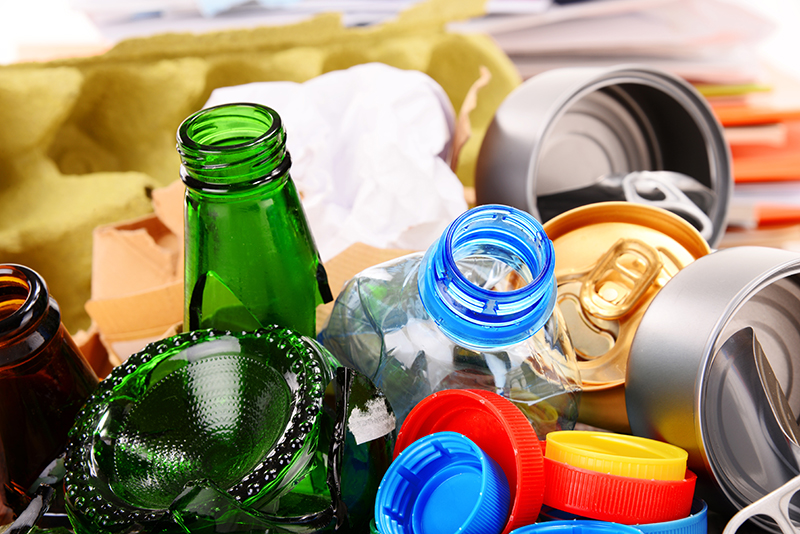
Josh Wood, marketing manager at Cromwell Polythene, discusses the impact of the new Green Claims Code, which outlines compliance guidance for the environmental credentials of packaging and product
THE Competition and Markets Authority (CMA) has introduced a new Green Claims Code to help businesses understand and comply with obligations under existing consumer protection law when making environmental claims.
There is growing momentum for responsible packaging and products, which address waste and recycling challenges, and help combat climate change.
Unfortunately, this demand can lead to ‘greenwashing’ whereby companies convey a false or misleading impression about their environmental credentials. In fact, a CMA co-ordinated global review, in 2020, of randomly selected websites found that 40% of green claims made online could be misleading consumers.
Andrea Coscelli, chief executive of the CMA, said, “More people than ever are considering the environmental impact of a product before parting with their hard-earned money. We’re concerned that too many businesses are falsely taking credit for being green, while genuinely eco-friendly firms don’t get the recognition they deserve.”
This makes it difficult for consumers to know where to start when choosing sustainable products.
Information should be clear and reliable, including packaging labelling, so that they can make an informed transaction.
The guidance applies to businesses operating across the whole of the UK. The CMA shares consumer protection law enforcement powers with other bodies, such as Trading Standards Services and sectoral regulators. It also shares certain consumer protection functions with the Advertising Standards Authority (ASA).
Where appropriate, it may work with other enforcement or regulatory bodies in relation to environmental claims.
This should help ensure businesses do not gain a commercially competitive advantage based on false claims.
If a business does not comply with consumer protection law, the CMA and other bodies, such as Trading Standards Services, can bring court proceedings. In some cases, businesses may be required to pay redress to any consumers harmed by the breach of consumer protection law.
Clear credentials
Following consultation, the guidance includes six principles to help companies comply with consumer protection law, which are that claims:
1) must be truthful and accurate
2) must be clear and unambiguous
3) must not omit or hide important relevant information
4) comparisons must be fair and meaningful
5) must consider the full life cycle of the product or service
6) must be substantiated
Data and standards
We believe there should be a regulated auditing process that verifies eco claims, founded on data, scientific or other evidence, and clearly labelled.
A good example is the Science Based Targets initiative (SBTi) ‘Net-Zero Standard.’
This ensures that businesses make targets in line with climate science and translate these into action. Frameworks like this make it harder for companies to falsify claims.
Another example is compliance with industry standards. For instance, compostable packaging, should conform to the UK and European standard BS EN13432, covering the requirements for packaging recoverable through composting.
Advice
Information should clarify how the product should be used and recycled. For example, compostable bags are ideal to contain food and garden waste.
However, if compostable packaging is put in with waste for landfill disposal, as with any other organic matter, as it degrades it will give off methane.
Additionally, if compostable packaging is put into the recycling stream, it can contaminate other materials, meaning that the whole batch cannot be recycled.
Whole lifecycle approach
Terms such as ‘green’ or ‘eco-friendly’ are often used without explanation and don’t necessarily apply to the whole product lifecycle.
Claims focusing on one component or ingredient should be made clear to the consumer. People can be misled if businesses have cherry-picked claims focusing on just one aspect of its product or business, which could have an adverse impact on the environment.
How materials are sourced, and production processes should be considered, including packaging, transportation, product use, durability, and disposal, including any waste or by-products.
For instance, our CPR manufacturing site ensures that recycling and processing of polythene meets recognised industry standards.
This includes EUCertPlast certification, covering material traceability, process control and quality of the recycled content in the end-product, and process control in recycling.
Material evidence
Clear information can assist businesses with their approach to clarifying the environmental benefits of type of material and packaging formats used. Consumers and businesses can be pushed into material or product switching, with the unintended consequences of using heavier alternatives.
This increases energy use, supply chain miles and associated greenhouse gas emissions due to the extra weight of material.
For example, a Denkstatt study looking at ‘The Impact of Plastics on Life Cycle Energy Consumption and Greenhouse Gas Emissions in Europe’ found that switching from plastics to alternatives could increase GHG emissions by 2.7 times over the product lifetime.
A 2020 report, ‘Examining material evidence – the carbon fingerprint’, commissioned by Veolia and published by Imperial College, found that, in most cases, the main alternatives to plastic packaging – cardboard, glass, steel and aluminium – ‘emit more greenhouse gases’.
Environmental credentials should also reflect the actual disposal and waste management route available, and not some aspirational infrastructure not yet in place.
Overall, we hope the new code encourages greener practices and innovation, whilst ensuring that those who fall short do not gain a commercially competitive advantage.
All industries and businesses, whether large or small, should champion ethical and environmentally sound products and processes, follow the CMA guidance, and be clear and honest in all they do.













